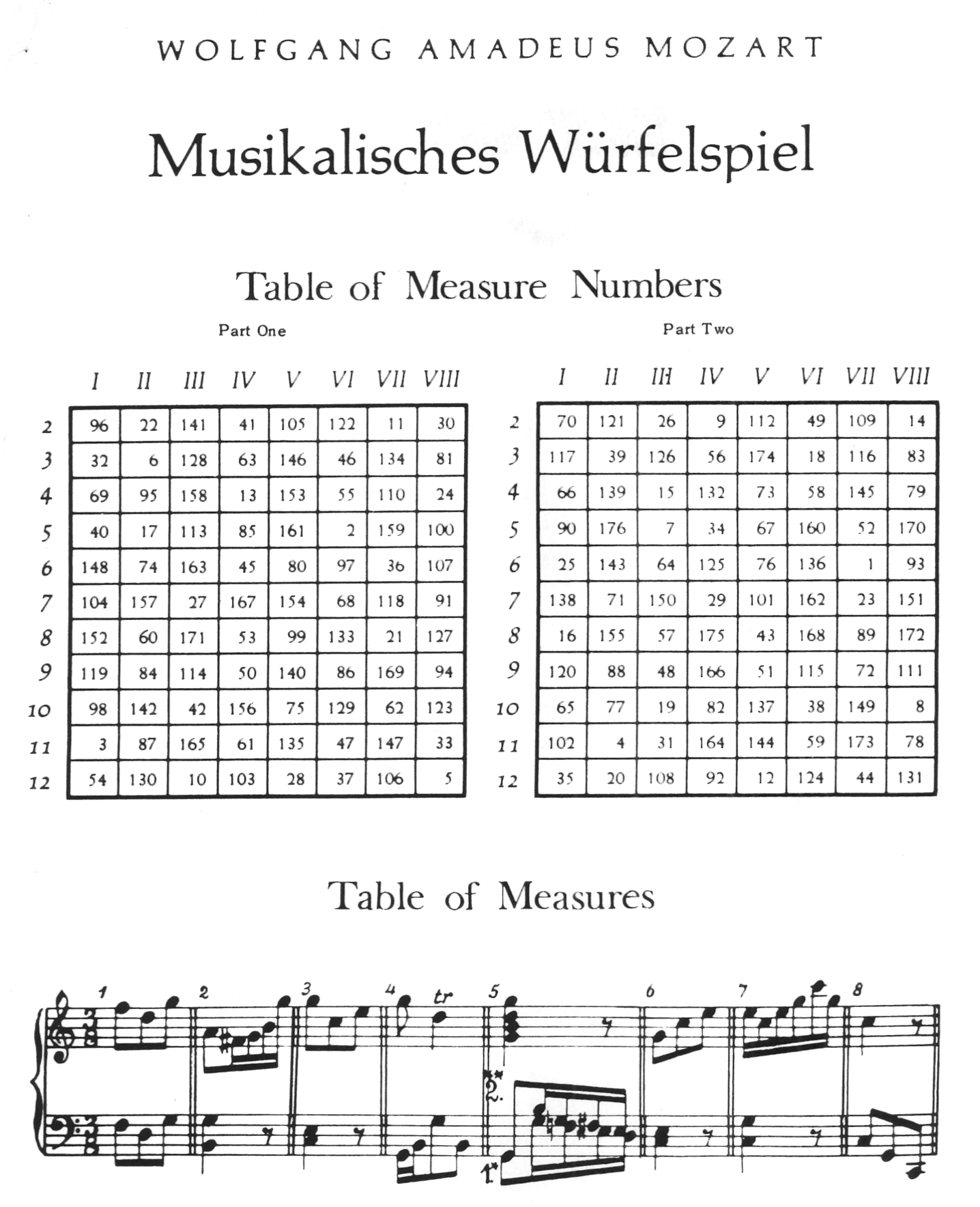On algorithmic music and musical creation GUIs
I spoke about musical creation algorithms and interfaces at "Music + Tech" night hosted by the Institute for the Future. The talk was on two topics: algorithmic music and musical creation GUIs.
algorithmic music
An algorithm is a well-defined process. Algorithmic music is created using an algorithm.
An early piece of algorithmic music is Mozart's "dice game" in which the participant throws a pair of dice, then based on the result uses a lookup table to find the next measure in the piece. Repeating this many times results in music created with an algorithm!
Now we have fast electronic machines called computers and can make decisions many times faster than throwing dice. What does this enable for us artistically?
I created an Ableton plugin called Jnana that will analyze MIDI clips and generate similar ones. This video explains:
Demo of Jnana v0.1
musical creation GUI
Modern musical creation interfaces on the computer are based on a visual paradigm that has existed for some time.
In these images, time is on the x-axis from left to right and layers of sound are on the y-axis from top to bottom.
Ableton Live challenged this visual paradigm within the context of electronic music production. In Ableton's "session" view, layers of sound are arranged along the x-axis, and along the y-axis are chunks of time called "scenes".
I am curious to explore other means of arranging sounds together. If someone is introduced to a software UI paradigm without much prior expectations about how musical elements are arranged visually, what are other paradigms that will be intuitive?
In this demonstration of "Sonarc", a web-based interface I have created, sounds are represented by circles and sequences of sounds are created when circles are touching. When the outer rim is selected, all of the sequences that are touching the rim will be fired simultaneously. This interface paradigm is also interesting because it is "scalable" in the sense that one can imagine "zooming out", resulting in this larger circle becoming a smaller one nested within the context of a larger piece.
demo of "Sonarc", a web-based musical creation interface
And that's it! There's not much to the slides, here they are anyway:
Perhaps a video will be here soon.



